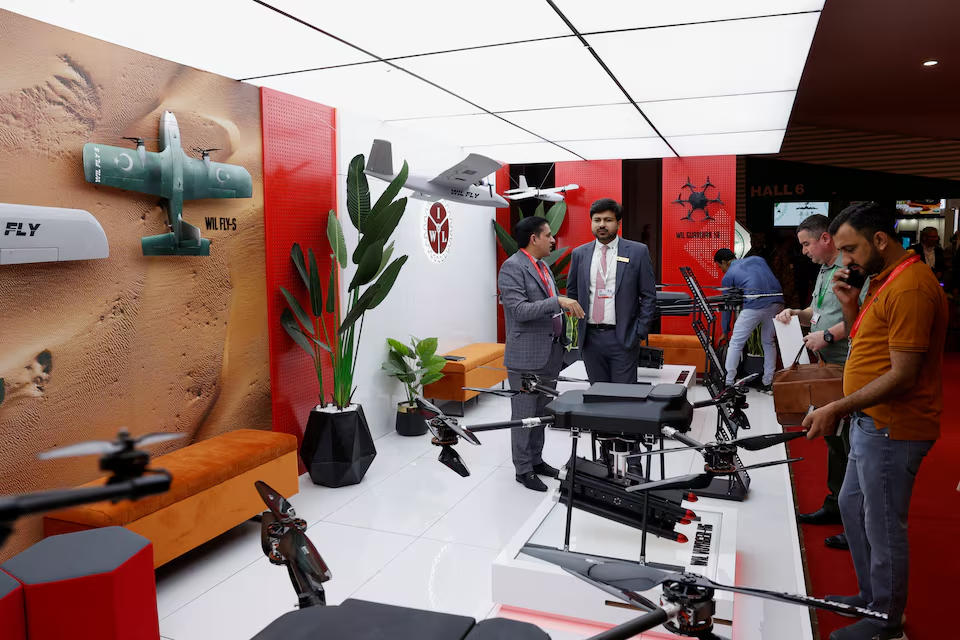NEW DELHI (KAAB TV) – A little after 8:00 pm on May 8, red flares streaked through the night sky over the northern Indian city of Jammu as its air-defence systems opened fire on drones from neighbouring Pakistan.
The Indian and Pakistani militaries have deployed high-end fighter jets, conventional missiles and artillery during decades of clashes, but the four days of fighting in May marked the first time New Delhi and Islamabad utilized unmanned aerial vehicles at scale against each other.
The fighting halted after the U.S. announced it brokered a ceasefire but the South Asian powers, which spent more than $96 billion on defence last year, are now locked in a drones arms race, according to Reuters’ interviews with 15 people, including security officials, industry executives and analysts in the two countries.
Two of them said they expect increased use of UAVs by the nuclear-armed neighbours because small-scale drone attacks can strike targets without risking personnel or provoking uncontrollable escalation.
India plans to invest heavily in local industry and could spend as much as $470 million on UAVs over the next 12 to 24 months, roughly three times pre-conflict levels, said Smit Shah of Drone Federation India, which represents over 550 companies and regularly interacts with the government.
The previously unreported forecast, which came as India this month approved roughly $4.6 billion in emergency military procurement funds, was corroborated by two other industry executives.
The Indian military plans to use some of that additional funding on combat and surveillance drones, according to two Indian officials familiar with the matter.
Defence procurement in India tends to involve years of bureaucratic processes but officials are now calling drone makers in for trials and demonstrations at an unprecedented pace, said Vishal Saxena, a vice president at Indian UAV firm ideaForge Technology (IDEF.NS), opens new tab.
The Pakistan Air Force, meanwhile, is pushing to acquire more UAVs as it seeks to avoid risking its high-end aircraft, said a Pakistani source familiar with the matter.
Pakistan and India both deployed cutting-edge generation 4.5 fighter jets during the latest clashes but cash-strapped Islamabad only has about 20 high-end Chinese-made J-10 fighters compared to the three dozen Rafales that Delhi can muster.
Pakistan is likely to build on existing relationships to intensify collaboration with China and Turkey to advance domestic drone research and production capabilities, said Oishee Majumdar of defence intelligence firm Janes.
Islamabad is relying on a collaboration between Pakistan’s National Aerospace Science and Technology Park and Turkish defence contractor Baykar that locally assembles the YIHA-III drone, the Pakistani source said, adding a unit could be produced domestically in between two to three days.
Pakistan’s military declined to respond to Reuters’ questions. The Indian defence ministry and Baykar did not return requests for comment.
India and Pakistan “appear to view drone strikes as a way to apply military pressure without immediately provoking large-scale escalation,” said King’s College London political scientist Walter Ladwig III.






